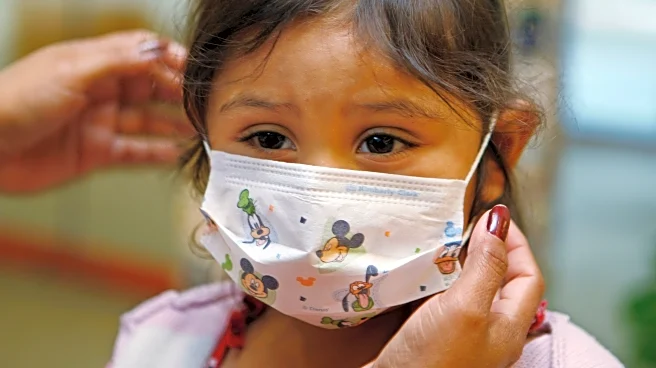What's Happening?
A recent study published in the journal Pediatrics has confirmed that young children, particularly those in pre-kindergarten and elementary school, are significant carriers of germs during the cold and flu
season. The research, led by Dr. Jennifer Goldman from Children’s Mercy hospital in Kansas City, Missouri, analyzed nasal swabs and symptom reports from over 800 students and staff in a Kansas City school district. The study found that more than 85% of participants had at least one respiratory virus detected, with pre-K and elementary students showing the highest rates of virus detection. The study highlights that young children can experience up to 10 respiratory viruses annually as their immune systems are exposed to new infections.
Why It's Important?
The findings underscore the critical role young children play in the transmission of respiratory viruses, which has implications for public health strategies, especially in school settings. Understanding the high prevalence of viruses among young children can help in developing targeted interventions to reduce the spread of illnesses. This is particularly important for parents, educators, and healthcare providers who are responsible for managing and preventing outbreaks in schools and homes. The study also emphasizes the importance of vaccinations, hand hygiene, and other preventive measures to mitigate the spread of infections.
What's Next?
Preventive measures such as ensuring children are up to date with vaccinations, promoting frequent handwashing, and maintaining clean environments in schools and homes are essential. Healthcare providers may need to prepare for increased consultations and treatments for respiratory illnesses in young children during the cold and flu season. Additionally, further research could explore more effective ways to reduce virus transmission in school settings.













